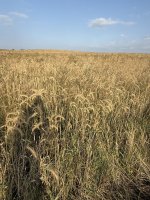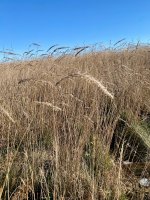So I lost my 2nd springer Buzz at the age of 6 to pyothorax due to a mean seed mid-season 2018. My vet confirmed the cause of death. Maybe I'd heard of mean seeds before then, but I didn't know much about them - certainly not enough to identify them or really even care to. But losing Buzz made me want to become as knowledgeable as possible.
Early in the learning process, I realized that my 1st springer Walt's death 5 years earlier at age 11 was absolutely identical to Buzz's. I'd previously chalked it up to living a demanding, hunting lifestyle, & his heart or something just gave out on him. But considering the details, there's exactly zero doubt in my mind that he also succumbed to pyothorax, almost certainly caused by a mean seed. Up until Buzz died, especially when I lived in Iowa, we'd hunt that stuff frequently, particularly Canada Wild Rye.
Since I began learning about mean seeds & trying to educate people a bit about them, I've been ASTOUNDED to learn how many people's dogs have had experience with them. Many, many, many!!
After witnessing 2 super not pretty deaths caused by mean seeds, & hearing countless other stories about them & other migrating foreign bodies, I wouldn't wish that experience on any dog. I'm not at all trying to cast fear of grasses or fear of hunting. I'd like us all to be aware of the potential effects, decide their level of importance to us, & protect our dogs if we want by being able to identify the nasty stuff. The end result, of course, being that our dogs are able to be amazing as long as possible, wreaking havoc on the maximum number of roosters.





